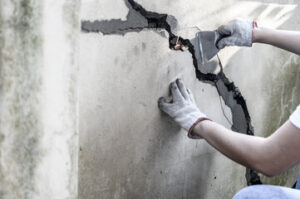Adding an updated kitchen to your home will boost its appeal and value. It will also give you a room that better fits your family’s needs and lifestyle.

Aim for timeless style rather than chasing trends. This will ensure that your new kitchen will look great for years to come. Contact Kitchen Remodeling Lexington KY for professional help.
During this phase, a homeowner works with a kitchen remodeling contractor to finalize their design and make material selections. This often involves creating a vision board to illustrate the style and tone of their remodel, as well as addressing any potential challenges. Clear communication between the homeowner and contractor is essential during this step to ensure that everyone is on the same page.
This step also includes identifying key pain points in the kitchen, such as lack of storage space or an inefficient workflow. Ultimately, the goal is to create a kitchen that meets the needs of the homeowner while reflecting their personal style. Depending on the scope of the remodel, this may include removing walls, expanding the kitchen footprint, or upgrading fixtures and appliances.
Kitchen renovations are notorious for being expensive, so it’s important to set a realistic budget before starting the project. This will help prevent financial surprises down the road and allow for any necessary changes during construction. It is also important to consider resale value, especially if you plan to sell your home in the near future. Keep in mind that prospective buyers place a high value on a beautiful and functional kitchen.
Choosing the right materials is vital to the success of any kitchen renovation project. The options are endless, from countertop materials to cabinetry to energy-efficient appliances. A homeowner should do their research by visiting kitchen showrooms and material providers to find the best options for their budget and style.
The planning phase usually lasts a few weeks and is the most exciting part of any kitchen remodel. The client will work with their contractor to select their preferred cabinets, countertops, backsplash tile, lighting, and more. This is a great opportunity for the client to be creative and add their own unique flair to the kitchen.
This phase can be a bit longer than the other phases as it is common for unexpected issues to arise. For example, delays in securing custom cabinetry or equipment can cause the timeline to slip. By staying organized and keeping in constant communication with the contractor, these delays can be minimized.
The Demolition Phase
Kitchen Remodeling is the process of altering a kitchen space to create a distinct environment that suits a homeowner’s lifestyle. It involves extensive design modifications, construction work such as electrical and plumbing upgrades, and may even include property extensions. It aims to improve functionality, enhance design, increase home value, energy efficiency, comfort, and personalization.
A successful kitchen remodeling project starts with a thorough demolition phase that removes existing structures and materials to make room for the new ones. This is a critical phase that should only be handled by professionals to ensure the safety of homeowners and workers, as well as to minimize risk.
Professionals start this phase by thoroughly assessing the existing kitchen and noting any potential issues that should be addressed. They will also prepare the area for the installation, including preparing a temporary kitchen or making arrangements for food storage and preparation if necessary. They will also turn off utilities and protect the workspace with plastic and floor protection.
Next, the demolition team rips out old fixtures, cabinets, countertops, and flooring to prepare for the construction phase. They will also rip out the walls in cases where structural changes are being made to create an open concept or change the kitchen’s layout. They will then clean the workspace and dispose of all unwanted materials.
Depending on the scope of the kitchen remodel, the construction phase can take anywhere from weeks to months. Once the demolition phase is complete, electrical and plumbing work will be completed. Then, insulation and drywall will be installed. This will provide a clean slate for the rest of the remodel.
The final step in the construction phase is to install cabinets and countertops, as well as appliances. Then, the finishing touches like paint and wallpaper will be added. Once everything is in place, the kitchen will be tested to ensure that it’s functional and aesthetically pleasing.
The Installation Phase
This is where the kitchen remodeling really begins to take shape. Cabinets are installed, countertops are fabricated and installed, and plumbing fixtures and appliances are added. This is also the time to consider upgrades such as a wine refrigerator or an under-counter water filtration system.
This can be a challenging phase, especially when budget constraints become a factor. This is where it’s important to prioritize and allocate resources wisely, focusing on the non-negotiables and allowing for the completion of those aspirational goals that will truly transform your kitchen into an oasis for culinary creativity and comfort.
At this point, it’s important to have a good partnership with your contractor so that a realistic timeline can be crafted for the project. This can help to avoid unexpected expenses down the road and ensure that the project is completed in a timely fashion.
The final stage is where all the finishing touches are put on, including a walkthrough with the contractor and any necessary punch list items. This is a great opportunity to address any issues with the finished product and ensure that the new kitchen meets all your expectations. It’s also a good time to add those final details that will elevate the look of the space, such as stylish cabinet hardware and crown molding.
The process of remodeling or renovating a kitchen is one that takes a lot of time, energy and money to complete. However, when done correctly, it can transform a room from a mundane living space into an elegant and functional cooking area that will be appreciated by future home buyers and add value to the property. By following the steps outlined above, you can ensure that your remodel is both successful and enjoyable. The key to this is careful planning and working with a reputable contractor. With these tools in place, you can achieve the dream kitchen of your dreams!
The Finishing Phase
The kitchen remodeling process involves altering the structure, layout, and style of a kitchen to create a unique environment tailored to the homeowner’s aesthetic preferences. This can involve significant design modifications and construction work including electrical and plumbing upgrades to provide a fully transformed space. Kitchen renovation, on the other hand, focuses on restoring or updating existing fixtures, finishes, and appliances without changing the fundamental structure of the kitchen.
The planning and design phase is arguably the most important step of a kitchen remodel, as it involves determining your vision for the new space and creating a design that meets your needs while remaining within budget. You may even want to consider working with a designer at this stage, as they can help you select products and finishes that are compatible with your preferred design style and function.
This is also the time to start searching for contractors and gathering any necessary permits. It’s best to find a contractor with a solid reputation and extensive experience in kitchen remodels. This will help ensure the project is completed on schedule and within budget. Be sure to take the time to review potential contractors’ portfolios and ask for references.
During the demolition phase, your existing kitchen will be removed and the construction of your new space will begin. This can take anywhere from weeks to months, depending on the size of your kitchen and extent of its transformation. During this time, you will need to make arrangements for a temporary kitchen if necessary and prepare your home for the disruption.
Once your space has been cleared out and a rough inspection of the plumbing, electrical and structural integrity is complete, installation can begin. This includes drywall, carpentry and flooring. Once these installations are complete, cabinets can be installed and countertops can be templated and fabricated. Backsplash tile can also be installed at this stage, adding to the overall appeal of your new kitchen.
Once the major installations are complete, attention turns to the final details. This includes installing hardware on cabinets and drawers, adding backsplash tile, painting walls, and doing any other finishing touches that will make your new kitchen look great and feel like home. It’s always a good idea to perform a final walkthrough of your kitchen and double-check that all work has been completed to your satisfaction before signing off on the project.







